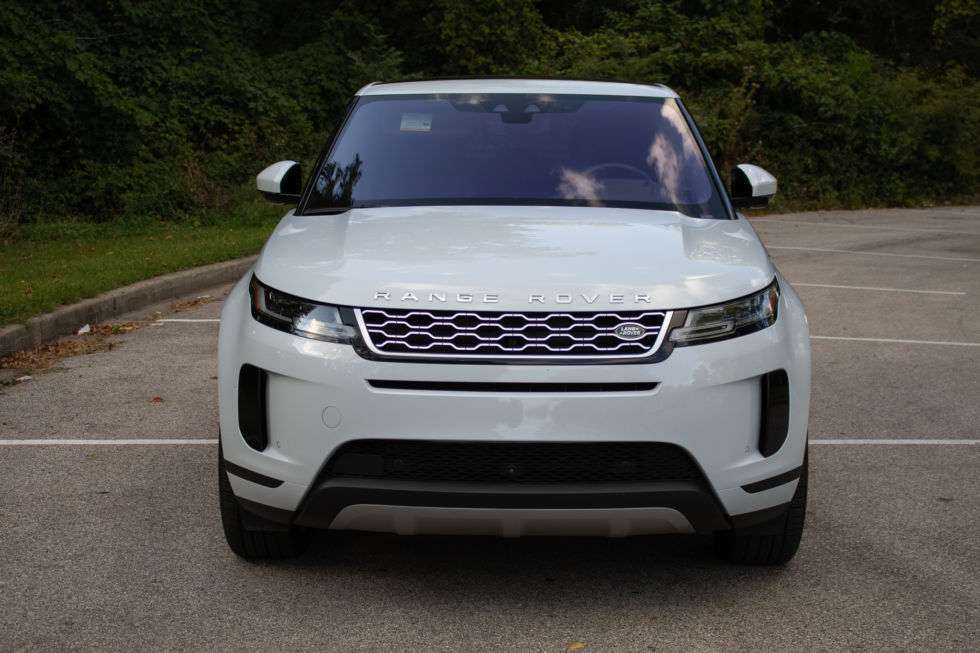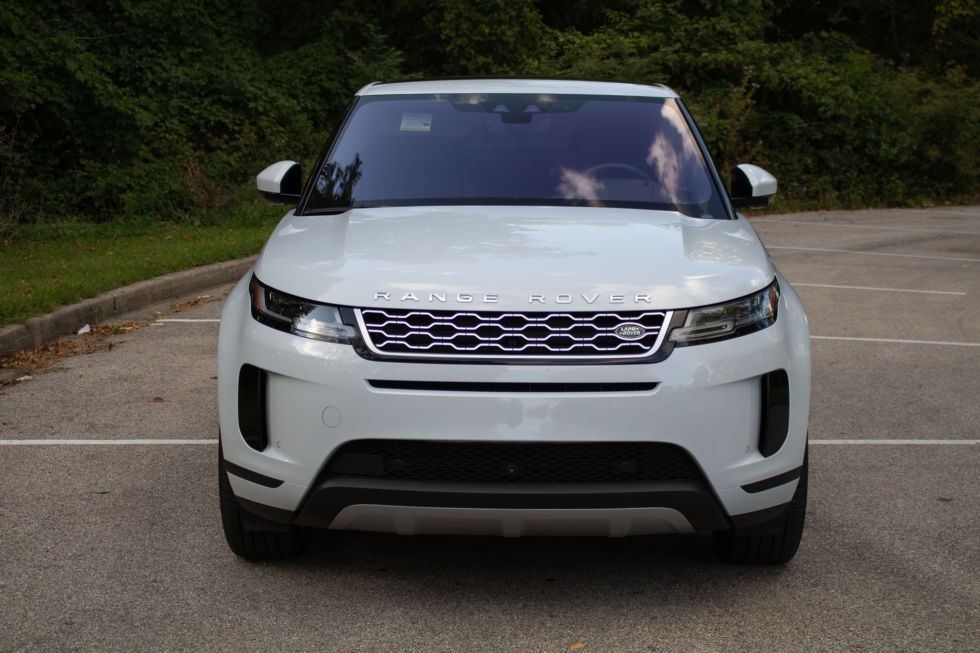
Review: 2020 Range Rover Evoque goes big on luxury, price tag
-

So unmistakably Range Rover from the front that you don’t need the badge. [credit: Marlowe Bangeman ]
There’s a certain amount of predictability that comes with a Range Rover. The vehicle is smartly designed, the interior is nicely appointed, there are some very clever bits, it’s going to offer a smooth ride—and there’s going to be some lack of attention to detail that nags at you every now and again. The 2020 Range Rover Evoque is no exception.
The second generation of Range Rover’s subcompact SUV made its US debut in February at this year’s Chicago Auto Show. Jaguar Land Rover hasn’t made massive changes, instead going for smaller tweaks to what has become its best-selling model worldwide. From the outside, the 2020 Evoque looks very similar to the pint-size SUV that debuted in 2010. Most of the changes are in the interior or under the hood. The 2020 Evoque gets the latest version of JLR’s InControl Touch Pro infotainment system, complete with optional CarPlay and Android Auto support. TouchPro is a dual-display setup, with the usual infotainment functions on top and climate and seat controls on the bottom. It’s very well-thought-out, but implementation is bumpy—a combination of small targets, noticeable lag between touch and response, and lack of tactile feedback leads to occasional frustration. It also takes too long to boot up after turning on the ignition.
JLR has equipped the 2020 Evoque with its mild hybrid EV powertrain. A 246hp (181kW) turbocharged 2.0L four-cylinder gasoline engine is paired with a small electric motor that generates up to 103lb-ft (140Nm) of torque to assist with acceleration and smooth over turbo lag when you hit the gas. Combined, the MHEV powertrain churns out 296hp (218kW) and 269lb-ft (364Nm) of torque. The 48V battery lives under the passenger compartment and regenerates itself when the driver brakes or lets off the gas. While JLR claims the MHEV Evoque is 6% more efficient than its ICE-only predecessor, this hybrid system is intended to make for a more responsive and consistent driving experience.
Read 7 remaining paragraphs | Comments




